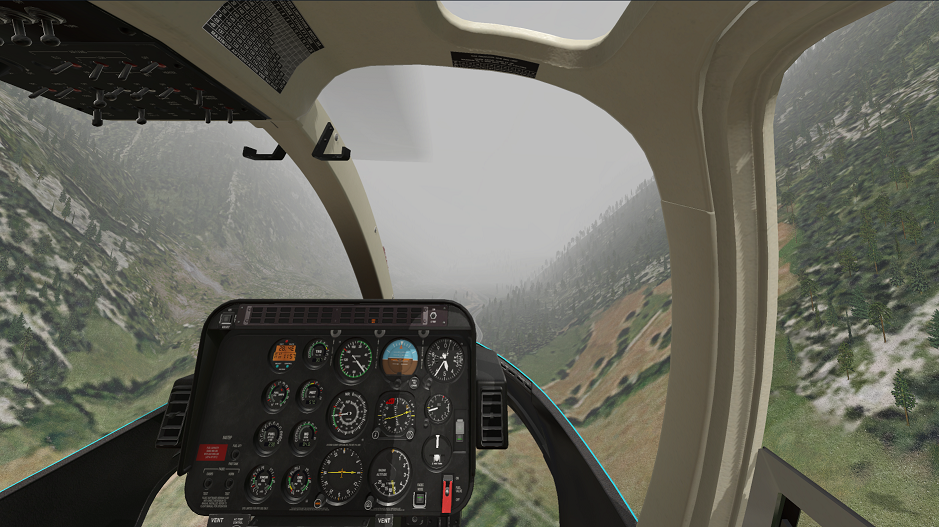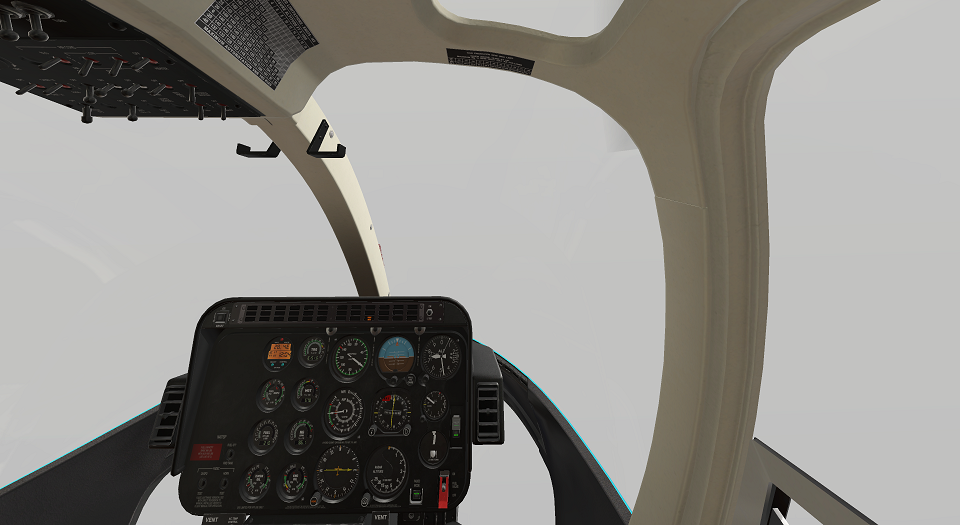¶ Introduction
Inadvertent entry into IMC is a situation where pilots lose visual contact with the ground due to deteriorating meteorological conditions.
The most common reason for inadvertent entry into IMC is pushing the limits of VFR conditions instead of turning back when faced with deteriorating weather.

Poor planning in long cross-country flights and limited visibility during night flights are contributing risk factors to inadvertent IMC.
A special training is required for helicopter pilots to avoid or manage inadvertent IMC.
Inadvertent IMC encounters are some of the most demanding, disorienting, and dangerous conditions a pilot can experience.
¶ Avoidance
Flying in conditions of limited visual contrast should be avoided since this can result in a loss of horizontal or surface reference, and obstacles such as wires become perceptually invisible.
To prevent spatial disorientation, loss of control or controlled flight into terrain, pilots should slow the helicopter to a speed that provides a controlled deceleration in the distance equal to the forward visibility. The pilot should look for terrain that provides sufficient contrast to either continue the flight or to make a precautionary landing.
If spatial disorientation occurs and a climb into IMC is not feasible due to fuel state, icing conditions, equipment, etc., make every effort to land the helicopter with a slight forward descent to prevent any sideward or rearward motion.
¶ Management
To admit the entry to the IMC conditions is the most important part of the management. The most common mistake which hinders a successful transition is trying to descend to re-establish VFR conditions.
"Once you encounter IMC, the ground is no longer your friend!"
When no outside clues are available anymore, stop looking for visual clues, trust the instruments and initiate emergency climb.
An unplanned transition from VMC to IMC flight is an emergency situation that involves a different set of pilot actions. It requires the use of different navigation and operational procedures, interaction with ATC, and crew member resource management.

Upon entering inadvertent IMC, priority must be given to control of the helicopter. Keep it simple and take one action at a time.
¶ Control
Firstly use the wings on the attitude indicator to level the helicopter.
Maintain heading and increase to climb power. Establish climb airspeed at the best angle of climb but no slower than VMINI.
¶ Climb
Climb straight ahead until your crosscheck is established. Then, make a turn only to avoid terrain or objects. If an altitude has not been previously established with ATC to climb to for inadvertent IMC, then, you should climb to an altitude that is at least 1,000 feet above the highest known object and that enables to maintain two-way communications with ATC services.
It may not be possible to find VMC conditions if the clouds extend vertically to high altitudes. In this situation, the helicopter climb performance should be assessed and icing conditions considered.
¶ Communicate
Attempt to contact ATC as soon as the helicopter is stabilized in the climb and headed away from danger.
Inadvertent IMC is an emergency situation which requires a MAY DAY declaration.
Initial transmission should include;
- Your approximate location, that inadvertent IMC has been encountered and an emergency climb has been made.
- Your altitude.
- Amount of flight time remaining (fuel state)
- Number of persons on board.
After the emergency climb is completed, you may either request vectors to a place where VFR conditions exist or to the nearest suitable airport/heliport for an instrument approach.
- VID 522050 - Creation
- VID 496402 - Wiki.js Integration